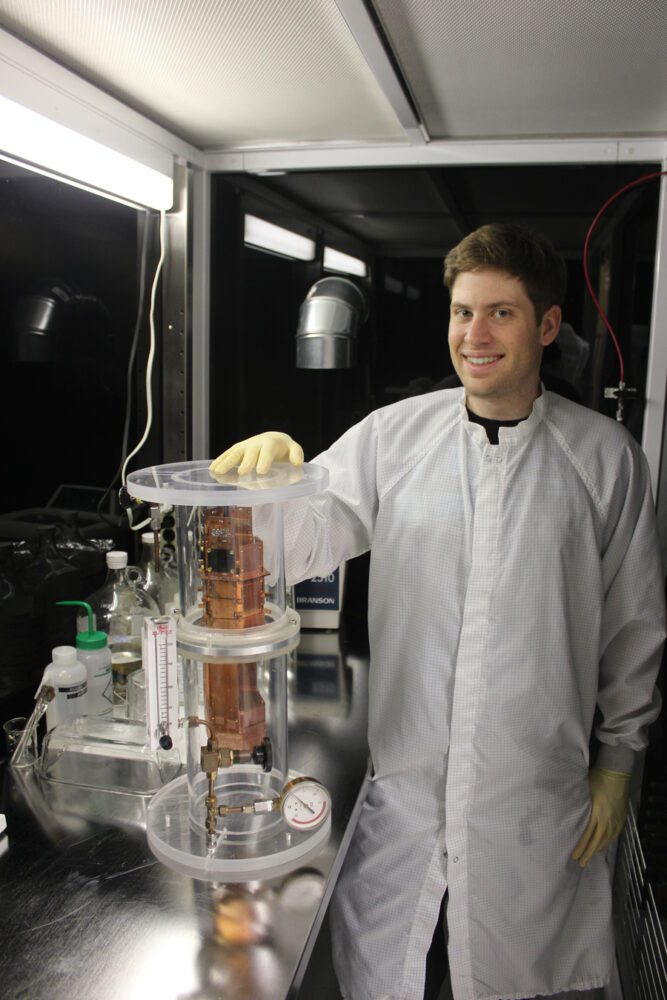Alexander Kim

Dengue is a mosquito-borne viral infection endemic in many of the tropical and sub-tropical regions around the world and lacks commercially available vaccines or dengue virus (DENV)-specific chemotherapeutics. During DENV infection, DENV non-structural protein 1 (NS1) is the only secreted nonstructural protein and can be found in the blood of infected individuals from as early as day 1 of symptom onset, and has been hypothesized to contribute to vascular leak during dengue hemorrhagic fever and dengue shock syndrome. We hypothesize that DENV serotype NS1 specific antibodies may be protective against […]
Wendy Tang

This summer, I plan on studying the longitudinal effect of multiple sclerosis on patients who have different disease courses. Multiple sclerosis is a disease of the central nervous system that is characterized by patterns of disability over time. Some patients experience a single episode of disability while others experience tremendous disability after onset. When treating a patient, physicians are uncertain how a patients disease will evolve over time. Since the beginning of the UCSF MS Epic study in 2004, patient data in the form of electronic medical records (EMR) have […]
Erik Kramer

One major area of experimental physics research is the search for dark matter, a hypothesized type of matter that does not emit nor absorb light. In an effort to directly detect the leading candidate for this new type of matter (weakly interacting massive particles or WIMPs), the Super Dark Matter Search (SuperCDMS) experiment utilizes germanium crystal detectors to observe the energy imparted to a nucleus in the crystal structure from a collision with a WIMP. After a successful run at the Soudan Underground Laboratory, the experiment is moving to SNOLAB […]
William Tokumaru

A quantum computer applies the concepts of quantum physics to make near instantaneous calculations. It is perhaps the best method for creating smaller and faster computers and it is able to apply Shors algorithm to break even the strongest contemporary encryption. The method of trapped ions is able to create a quantum computer by manipulating atoms suspended above and shuttled between surface traps by means of an electromagnetic field. Engineering these devices relies on scaling them up to simultaneously control many ions individually. At the moment, a major challenge to […]
Louis Lau

Despite the great burden of dengue worldwide caused by infection with the four dengue virus serotypes (DENV1-4), neither specific antiviral therapy nor vaccines for dengue are commercially available. Several vaccines are currently being tested in clinical trials; however, the first proof-of-concept dengue tetravalent live attenuated vaccine efficacy results have proven disappointing due to incomplete pan-DENV protection. The purpose of this study is to investigate DENV-specific serum IgG avidity generated against DENV following the clinical trial of a tetravalent DENV vaccination in humans, utilizing an in vitro ELISA-based system. This study […]
Surbhi Trivedi

The goal of this research project is to investigate the genetic diversity profile of dengue virus populations within each human host. Dengue, like other RNA viruses, can evolve through the accumulation of genetic mutations that arise due to the error-prone nature of the replicase. This virus also undergoes population bottlenecks and genetic recombination that affect the viral diversity profile. During my 2013 SURF-Rose Hills experience, I processed pediatric samples of infected PBMCs (peripheral blood mononuclear cells) and serum (cell-free fluid separated from blood) using high throughput sequencing technology. We are […]
Amit Akula

The California Report Card (CRC) is a social media platform that collects public feedback on timely issues and uses a peer-to-peer evaluation network to filter for the most constructive and insightful comments provided. Already successfully deployed with over 8000 visits, the CRC has already indicated high public interest in disaster preparedness. My lab is working to create a new version of the CRC focused on disaster preparedness. We hope to use the CRC as a tool to foster public awareness and dialogue around earthquake safety and wildfire prevention. Since the […]
Grace Lee

Retrotransposons are sections of our DNA that can replicate and insert themselves into our genome to create duplicates and invite mutations. They make up around 40% of our genome, yet their roles in most biological pathways is not yet completely understood. We see a significant derepression of certain retrotransposons when we analyze the expressions levels of retrotransposons in cancer cells. This derepression tells us that they are activated and take part in tumorigenesis, though the precise mechanism is unclear. To begin to understand these retransposons, we must first develop an […]
Taylor A. Vega

The brain, the seat of cognitive and behavioral control, and the mechanisms that give rise to these thoughts and behaviors are still widely unknown. My research aims at exploring the neural circuits that aid in our everyday decisions and behavior. Using electroencephalography (EEG) as well as functional magnetic resonance imaging (fMRI) we are examining neural oscillations in the alpha band (8-12 Hz) and its relationship in regulating the integration of information over large cortical areas, specifically in the fronto-parietal salience network as well as activity in the default mode network. […]
Katherine Chen

A hallmark of Mycobacterium tuberculosis (Mtb) infection in humans is a latency period where the bacteria remain dormant in granulomas. Lipid droplets within macrophages, a component of these granulomas, are hypothesized to be a source of energy for Mtb. Research suggests that lipid droplet formation may be mediated by large quantities of nitric oxide produced by infected macrophages. This project aims to characterize lipid droplet formation and nitric oxide production in macrophages from C3HeB/FeJ mice in the context of TLR stimulation, IFN-, and infection with Mycobacterium marinum, a close genetic […]